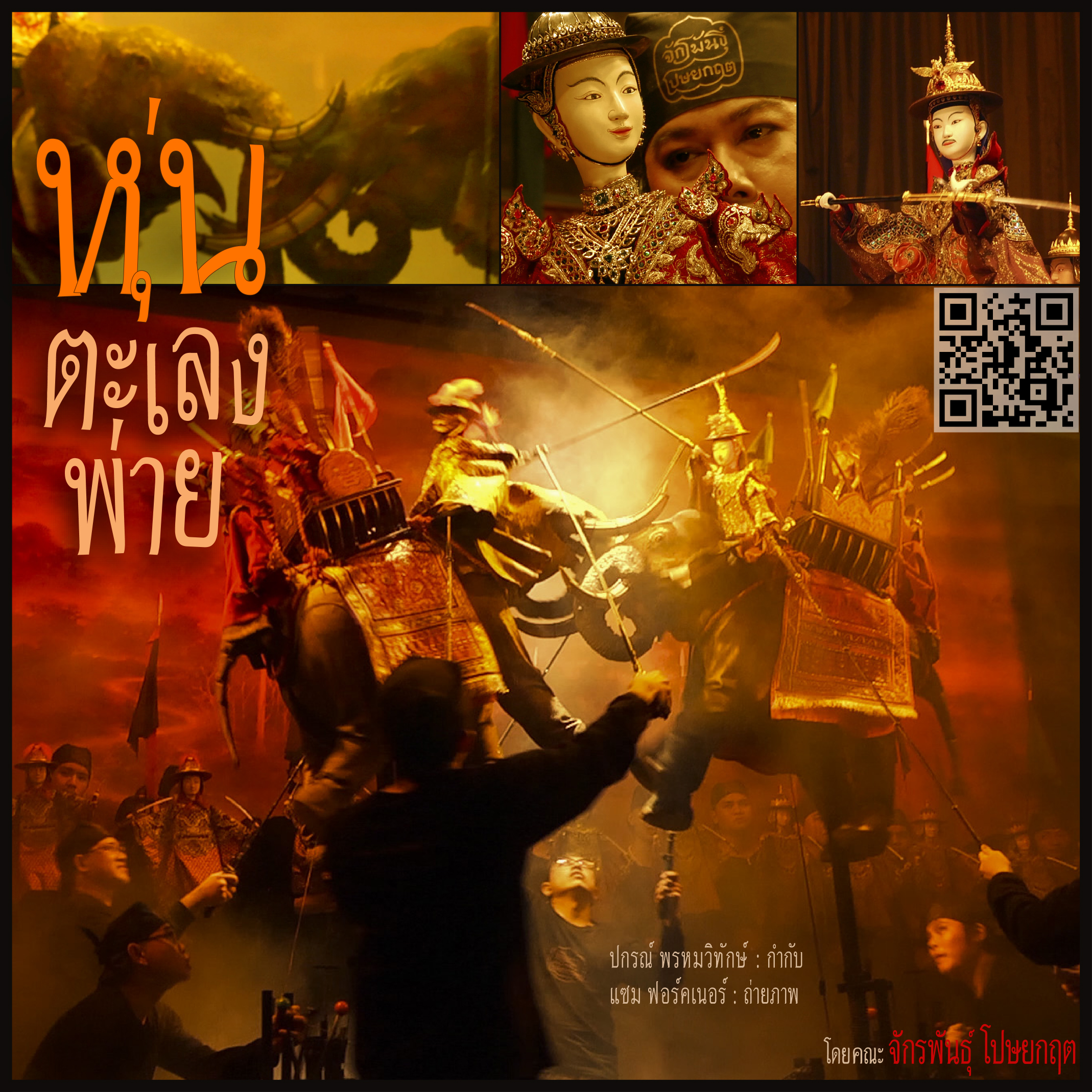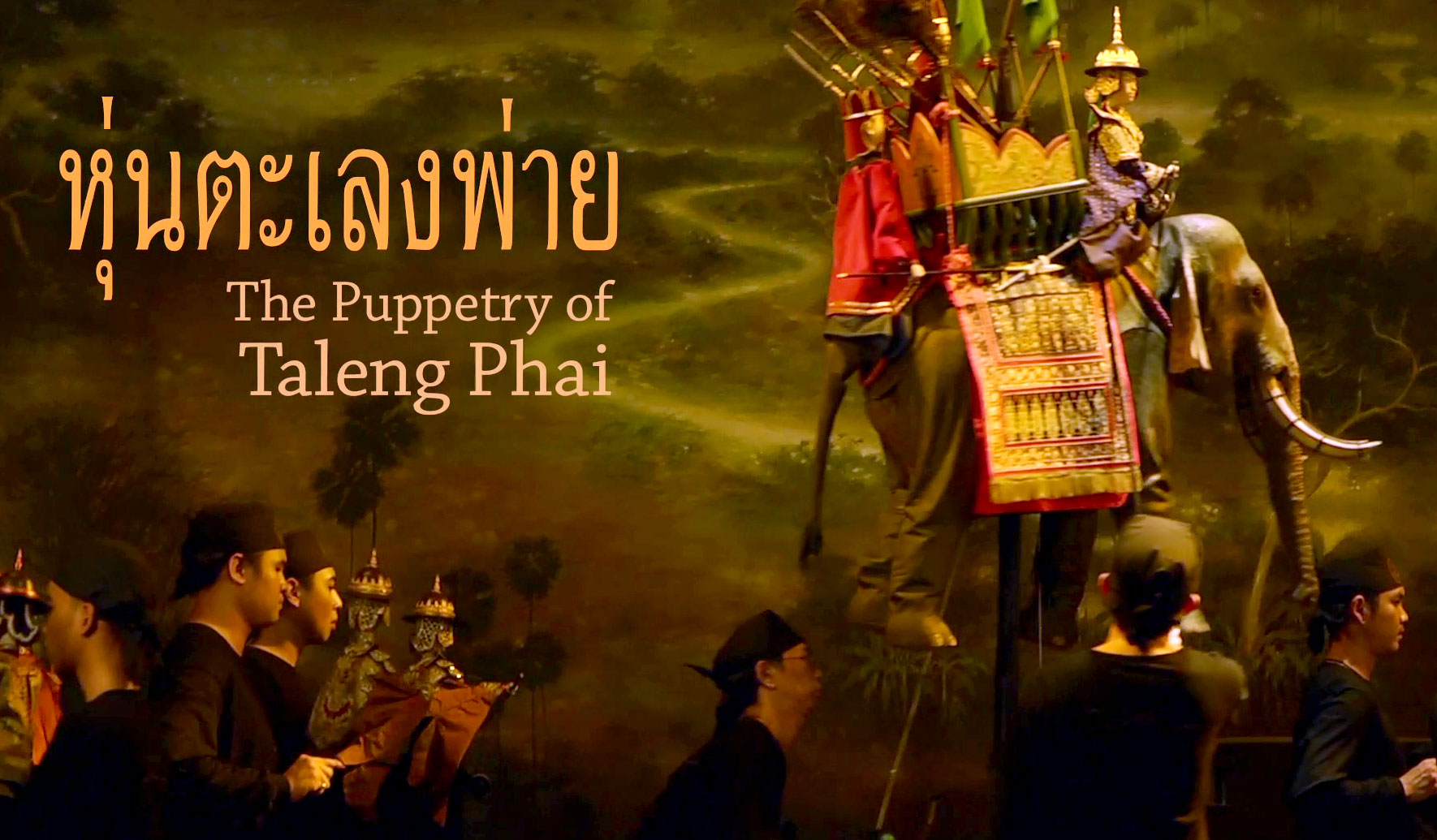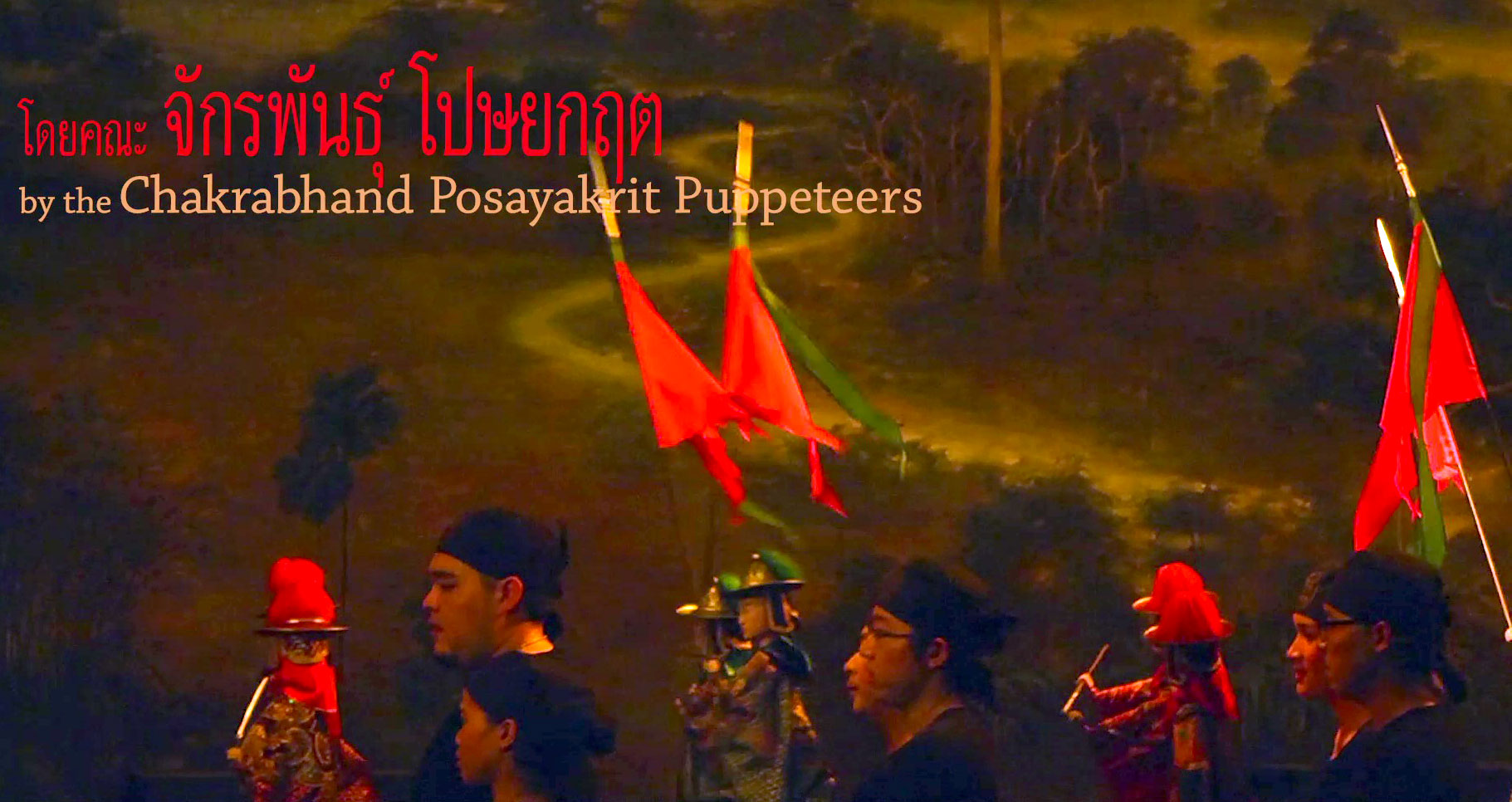
Pakorn Prohmvitak



Abstract :
Highlighting the beauty of every aspect of this magnificent puppet performance was the goal of directing this project. Focusing on emphasizing the artistic qualities of the puppeteers, their skills and their performances, how they rehearsed, and how hard they worked behind the scenes are some examples of these aspets. All the details of productions such as scene design, the props, music and songs, dancing, and how much hardship their team must overcome.
The performing puppeteers were extensively interviewed to find the details of performance that are hard to get: the way they use their hands, the way they place their feet, the dancing that must be synchronized with music, and also synchronized with the emotions in the script.
In the editing stage, the focus was on the story and how to put together linear sequences to help the audience understand the story of Taleng Phai. The focus was on showing the expressions of the puppets and the candid emotions of the performers, who play not only the puppet’s character, but also contain the feelings of the puppeteer as they project them into the puppet. By concentrating on the artistic beauty of the performance and puppeteers the viewers can follow along. Everything the performers do and all their content makes the play look beautiful, entertaining and educational at the same time.
Objectives :
The objective of this documentary is to examine the beauty of every part of this puppet performance. The beauty in these puppets, which are characters, comes from their faces, eyes, noses, mouth, hair, decorations, costumes, color and jewelry. To study the movement of the puppets and the movement interpreted by the puppeteers. How they project their emotions to make the puppets lively. To study the musical dialog and the story, study the style of Thai-Ayutthaya and Burmese style art. This project interviews the puppeteers to know how hard the rehearsals and performances they face are. How hard they try to make this performance perfect. Yet another objective is to produce a documentary for viewers to see and absorb the beauty of this puppet performance masterpiece. To make them impressed and love Thai traditional art.
Conceptual Framework :
The performing puppeteers were extensively interviewed to find the details of performance that are hard to get: the way they use their hands, the way they place their feet, the dancing that must be synchronized with music, and also synchronized with the emotions in the script.
Process / Methodology :
The process of making this piece was done step by step. Step one, watch the full performance of two or three different shows. Step two, think about how to capture the essence of the performance. Three, write the questionnaire for the interviewer with the scope and idea in mind. What is needed or not need can be determined by giving the interviewer the freedom to express their ideas. Step four, recording the interviews and shooting the footage, 24 hours of it. Step 5, select, edit and shape up the content into good proportions, until it was one hour and 7 minutes long. Step 6, select the footage of the interviewee for a beautiful picture size by knowing where to emphasize. Step 7, polish the piece beautifully in terms of pacing, rhythm and beautiful picture sizes, color correcting.
Techniques and Materials :
Panasonic professional video camera, editing software
Result / Conclusion :
To give viewers understanding and insight of the story and history of the Ayutthaya period and Hongsawadee. To know the start of art. Focus on the beauty in every aspect and movement of the puppet and puppeteer, music all visuals that makes the viewer impressive emotion. To have the movie for teaching in Thai art studies class and multi-cultural class, and spread the piece on YouTube for everyone.
References :
Rod Puppets created by National Artist Chakrabhand Posayakrit, The Chakrabhand Posayakrit Foundation, Bangkok 2015, 2025